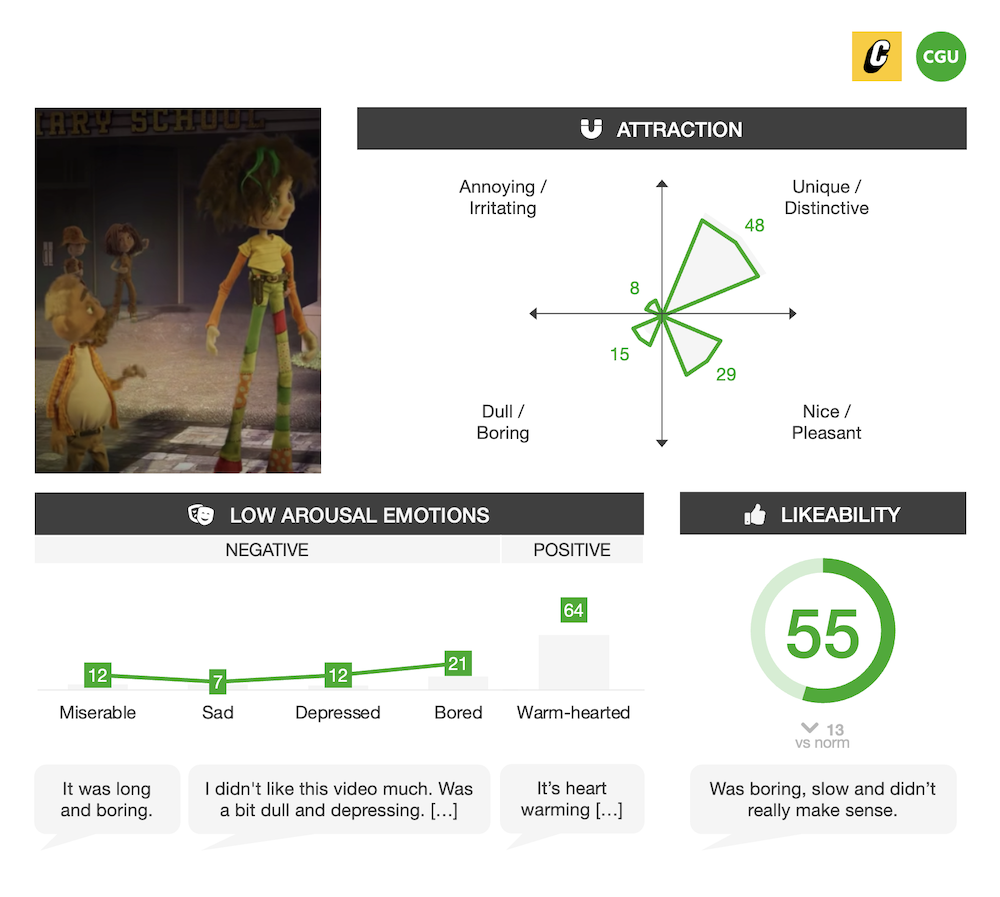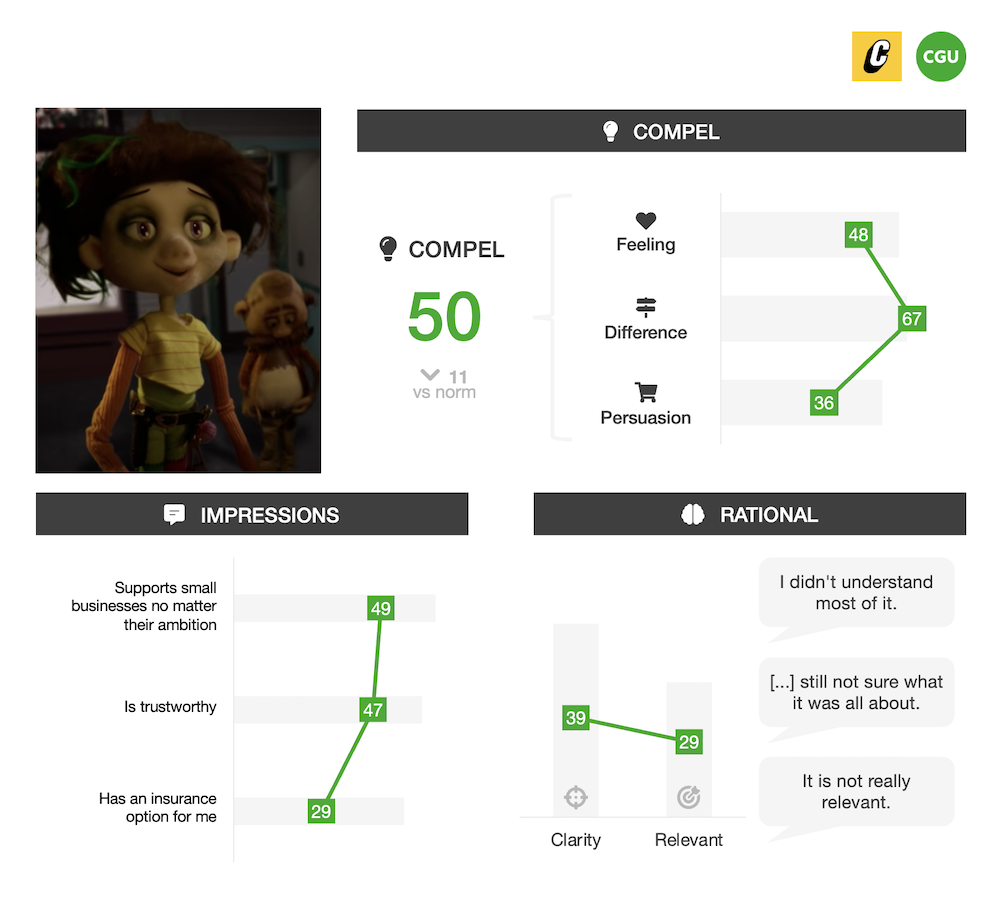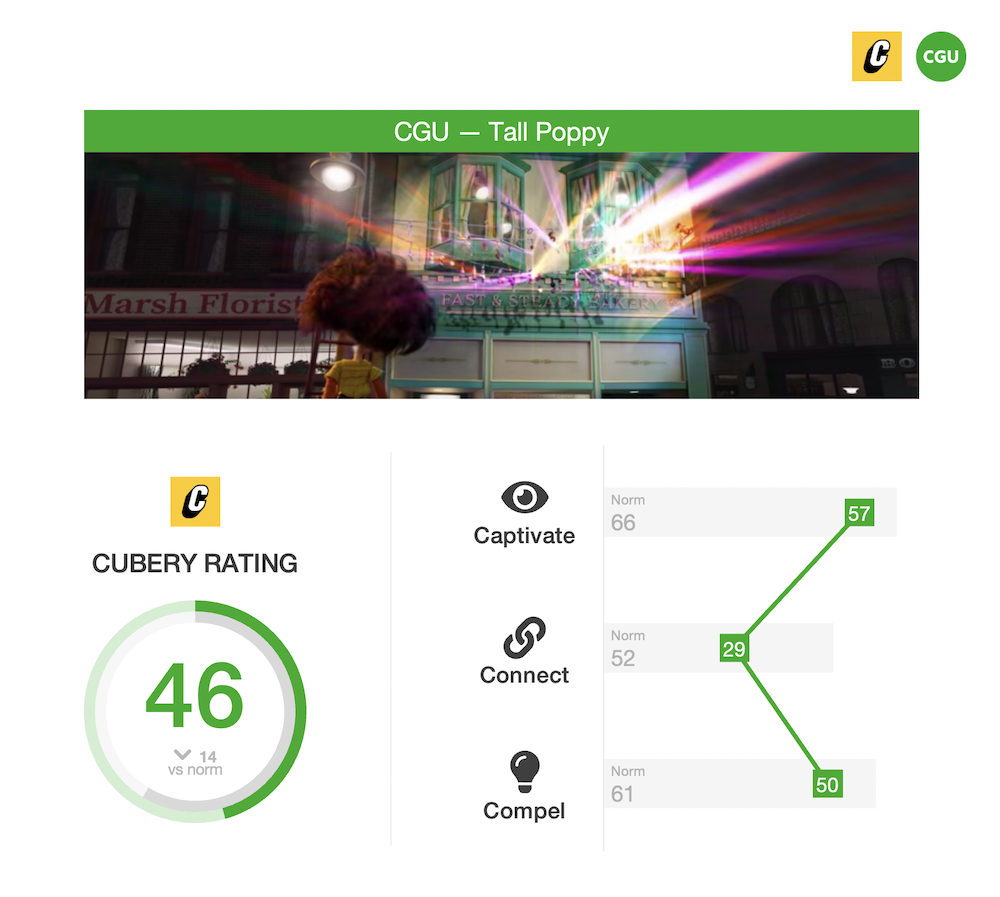
Unfortunately, Internet Explorer is an outdated browser and we do not currently support it.
To have the best browsing experience, please use Google Chrome, Firefox, Microsoft Edge or Safari.
We use cookies to improve your experience on our website. By continuing to browse this website, you agree to our use of cookies. For more information, please refer to our privacy policy.

This is a self-funded case study using our Ad Testing solution.
A few weeks back something strange happened on Australian television — The Jim Henson Company (creators of Labyrinth, Fraggle Rock, and The Dark Crystal) took over a major network for an entire commercial break. The ad, for CGU Insurance, told a 5-minute tale about Poppy and her journey to overcoming a uniquely Australian condition called “tall poppy syndrome” — a societal tendency to tear down tenacious individuals.
The film was the latest release in CGU’s “Ambition” platform, with the campaign celebrating those willing to go against the grain and risk everything in the pursuit of success. However, was a surreal 5-minute mini-movie the best way to convey this idea? The ad certainly aroused curiosity, prompting strong reactions on social media as people expressed both surprise and confusion about the unexpected interlude.
We were keen to see if the ad would hold attention, whether people would watch the extended story through to its uplifting conclusion, and ultimately whether such a bold move would deliver commercial effects for CGU. We use 3Cs to predict in-market success:
The Jim Henson Company’s unique production style is a departure from what people are typically used to seeing from advertisers (let alone CGU), serving its job of keeping people on their toes and intriguing them to want to find out more. However, while some enjoyed the heartwarming tale, others were overwhelmed by the moody lighting, obscure characters (including Poppy), and unnecessarily long run-time — describing the ad as boring and creepy.

As a result, many people tuned out, struggling to understand what they were meant to take away from the ad, or even that there was a commercial intent behind it. With some live viewers initially attributing the ad to a scheduling error, it goes without saying that CGU’s role in the story was tenuous.
While leaving the limelight on Poppy and letting creativity flourish would’ve no doubt been the intention, in order for this strategy to work, powerful storytelling is needed to string everything together. However, without sufficient context most people weren’t emotionally invested in Poppy’s plight, instead left feeling miserable or depressed by the “needlessly mean” story — rather than uplifted by her perseverance.

While some took away broad sentiment around bringing color into a dark and mundane world, and the triumphs of running a small business, by-and-large people failed to recognize the ad’s intent to advocate for “Tall Poppies” (or what a “Tall Poppy” was in the first place, and how they related to business success). Less than half of people agreed that CGU supported small businesses no matter their ambition, or that it was a caring brand. Lacking a clear story and meaningful role for the brand subsequently hindered relevance and diluted positivity toward CGU.

There’s no doubting that this was a bold play by CGU; both the media buy and production from The Jim Henson Company wouldn’t have come cheap, so kudos should be given to the IAG marketers behind the campaign for pushing the boundaries. But ultimately, creative theatrics can’t be allowed to overshadow the necessary ingredients for advertising success, which is what caused “Tall Poppy” to fall down.

Want to test your own advertising, packaging, or product ideas? Cubery combines a team of creative effectiveness experts with cutting-edge technology, bridging the gap between creativity and commercial impact. Get in touch to learn how we can unlock growth for your brand.
